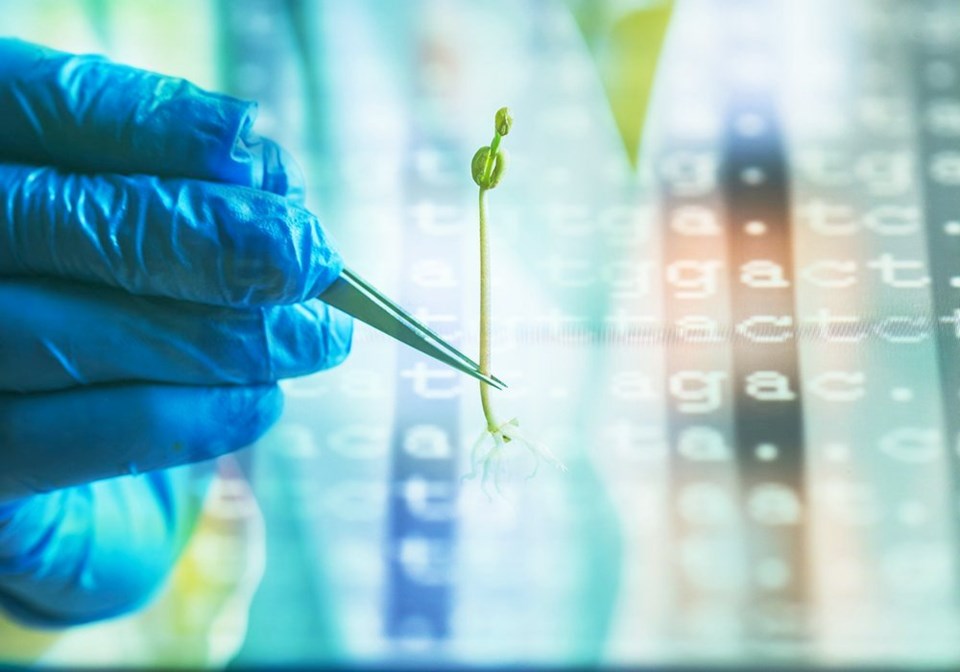It appears the department will treat gene-edited crops differently from genetically modified (transgenic) crops, which means the oversight of gene-edited crops could be closer to conventionally bred crops.
Gene editing is often described as removing or altering genetic sequences at precise locations in the genetic code.
It’s different from transgenic plant technology, where DNA from another species, such as a bacteria, is inserted to achieve a desired trait.
The best known gene-editing tool is CRISPR-Cas9, a technique used to cut sections of DNA. Scientists from California and France won the 2020 Nobel Prize in Chemistry for their discovery of CRISPR.
If Health Canada does regulate gene-edited crops the same as conventional plant breeding, it would represent a win for the plant science industry and possibly Canadian farmers.
Supporters of gene-edited crops, including many plant breeders, believe it could revolutionize crop development. It will allow scientists to quickly and precisely change a plant’s DNA to achieve desired traits.
“Whether it’s developing a canola variety that is more resistant to disease, a high-fibre wheat crop, a soybean that produces a healthier oil or popular fruits and vegetables that don’t go brown as quickly… gene editing has the potential to offer benefits to farmers, food processors and consumers,” the Canada Grains Council said in March.
The Health Canada guidance on gene-edited crops is part of a larger department effort to modernize plant breeding regulations. Gene editing is the crucial piece that ag industry groups are watching because of the implications for plant breeding innovation.
Health Canada requires pre-market safety assessments for GM crops that can add millions or tens of millions of dollars to the cost of getting a variety to market.
However, a gene edited plant may not trigger regulation or an assessment. Oversight could be more like a conventionally bred crop.
On Dec. 6, Health Canada met with representatives of the Canadian Biotechnology Action Network and provided an update on its plan for gene-edited crops.
Two days later, CBAN issued a news release and condemned Health Canada’s plan.
“Under new regulatory guidance, Health Canada is removing its authority to regulate many new genetically modified foods developed with gene-editing techniques… and leave safety assessments to product developers instead,” said CBAN, a coalition of 16 groups, including the National Farmers Union and organic farm organizations, that raises awareness and monitors GM crops in Canada.
CBAN and other groups also sent a letter to agriculture minister Marie-Claude Bibeau and health minister Jean-Yves Duclos, asking the government to pause the decision on gene-edited crops.
“We oppose the proposals from Health Canada and the Canadian Food Inspection Agency that would allow many gene-edited genetically engineered foods and seeds onto the market with no government oversight,” the letter says.
CBAN may believe that gene editing is a method to produce genetically modified crops, but many scientists have a different opinion. Most describe gene editing as another plant-breeding tool, which allows scientists to precisely and quickly achieve their breeding goals.
Some scientists put it in a larger category called NBT — New Breeding Techniques.
In a way, Health Canada already has a position on gene-edited crops.
In March, it said after a “review of the current scientific knowledge regarding the use of gene-editing technologies … Health Canada concludes that the use of gene-editing technologies does not present any unique safety concerns compared to other methods of plant breeding.”
That puts Canada on the same footing as other countries, such as the United States, Japan, Australia and Argentina, which have decided that gene-edited crops are safe.
American crop science companies are already using the technology because the U.S. government provided guidance nearly four years ago.
In March 2018, U.S. agriculture secretary Sonny Perdue said gene-edited crops would be treated similarly to conventional plant breeding and would be largely exempt from regulation.




